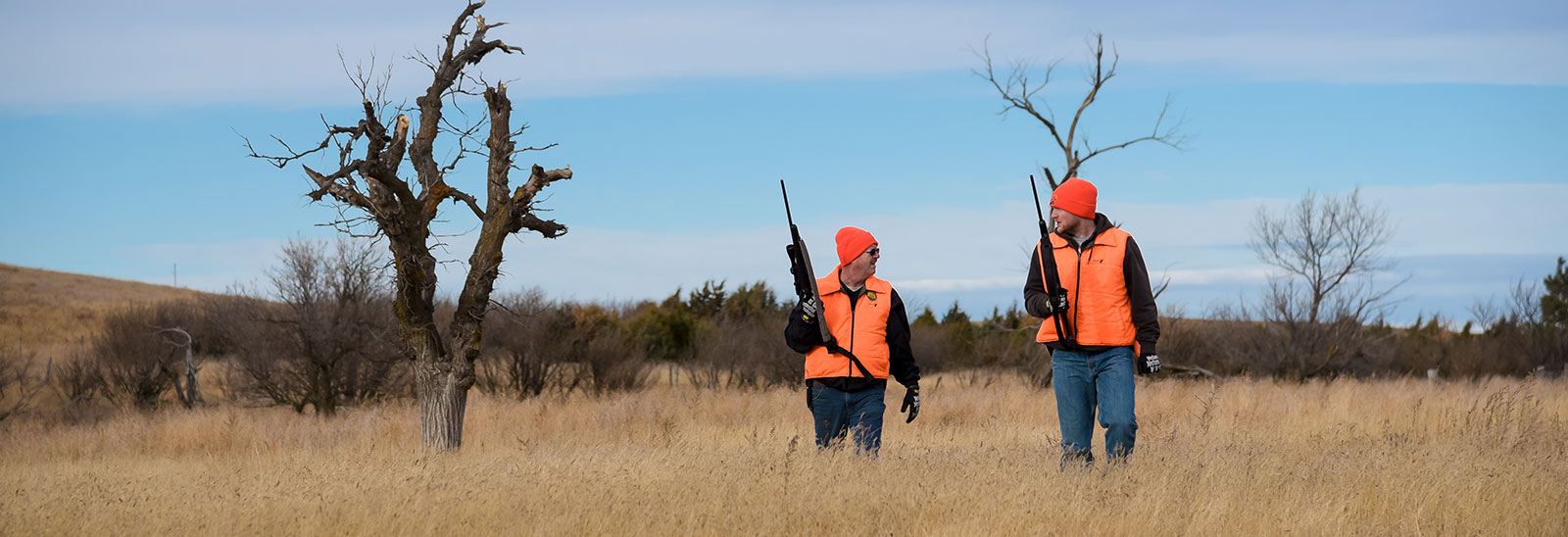Deer License Numbers Fall - EHD to Blame
Ron Wilson

The number of deer gun licenses made available to hunters by the North Dakota Game and Fish Department have been on the rise since 2016.
That changed this year, and the blame for the reduction of 8,000 deer tags compared to 2021 is easy to assign.
In 2021, amid significant drought conditions that hamstrung much, if not all, of the state, the Game and Fish Department received its first report on Aug. 1 of deer dying from epizootic hemorrhagic disease near Mandan.
And reports of the fallout of the naturally occurring virus spread by a biting midge that is often fatal to white-tailed deer, and less commonly to mule deer, pronghorn and elk, continued to pour in to Game and Fish for many weeks thereafter.
“I’m going to temper my strong statement, but it’s safe to say the EHD outbreak in 2021 is on par with the worst year that we’ve witnessed in terms of EHD attributed mortality,” said Dr. Charlie Bahnson, Game and Fish Department wildlife veterinarian. “Devastating is probably a good word for it.”
While EHD has often been documented in southwestern North Dakota for decades, the hardest hit areas of the state in 2021 were along the Missouri River north and south of Bismarck-Mandan, as well as a smaller area near Williston.
“We saw a pretty dramatic decrease in harvest success in a number of units, particularly along the Missouri River,” Bahnson said. “And that really tells you that it was harder to find deer out there. Even when you remove hunters who voluntarily returned their licenses, the remaining success of license holders was dramatically reduced.”
The Game and Fish Department in 2021 allowed hunters with whitetail or “any” deer gun licenses in 22 hunting units the option of returning those licenses for a refund.
To use an overused phrase, as Bahnson put it, 2021 was truly the perfect storm for a significant EHD outbreak for a number of reasons.
“For one, 2020 was a bad EHD year in traditional areas, so we knew that coming off of 2020 there was probably a fair amount of residual virus out there,” he said. “The second thing would be that the literature has demonstrated a pretty strong tie between bad EHD years and drought conditions, and in July of last year, nearly all of the state was under extreme or even exceptional drought, and the worst areas were actually kind of along the Missouri River, just north of the Missouri River.
“A third factor is that we actually had pretty good high densities of deer along the Missouri River, so the kindling was there for things to blow up,” he added. “A final factor was the virus was moving into a population that rarely, if ever, sees the virus. So, there was truly what we call a ‘immunologically naïve population,’ which also lends itself to really dramatic effects.”
On top of that, a couple hard frosts needed to stop the outbreak in its tracks were late in coming.
“On average, we start to see our first frost the fourth or fifth week in September in most parts of the state, but in 2021 we didn’t start to see our first hard frost until the end of October,” Bahnson said. “Unfortunately, things just continued to spiral out of control for another four or five weeks.”
On a positive note, Bahnson said the deer still on the landscape in those areas hard hit in 2021 were likely exposed to the virus and now have some level of immunity.
“There’s some resistance built up that should help us out this year,” he said. “Because predictions are pretty cheap, I would predict that we won’t see nearly the kind of year that we saw last year.”
Plus, drought conditions that persisted and fueled the outbreak in 2021 are a thing of the past, at least at this writing.
Bahnson expects whitetail numbers to rebound, and rebound pretty quickly, in those hard-hit areas, especially if there is good habitat on the landscape and conditions allow.
“If there’s good conditions out there, they’ll produce more fawns and it doesn’t take long to build back up the population,” he said. “I think it really demonstrates the fundamental message that the Game and Fish Department tries to put out that habitat is what builds resilience in our deer population. If we can maintain good habitat, get some favorable weather patterns in the next couple of years, I think we can be pretty confident that we’ll get back to a level that people are comfortable with.”
While EHD reared its ugly head in a big way in 2021, Department wildlife managers consistently monitor other wildlife diseases, namely chronic wasting disease, which affects the nervous system of members of the deer family and is always fatal.
Understanding this, Bahnson said people will ask, and for good reason, why the Game and Fish Department cares about CWD, when clearly there is an impact from EHD?
“One thing I try to illustrate is that EHD is actually a very, well-studied disease phenomenon across the United States, and one big take away from EHD is that as dramatic of a year as we saw in 2021, we know that it’s cyclical. It comes and goes, and whitetail deer can definitely survive in the long-term with EHD,” Bahnson said. “By comparison, CWD is this slow, incipient thing where you’re not going to see one quiet year and one bad year in this oscillating pattern, you’re just going to see this increased disease pressure that, if let uncontrolled, could become an annual, mounting cause of mortality, that the population will have a hard time sustaining in the long term.”

